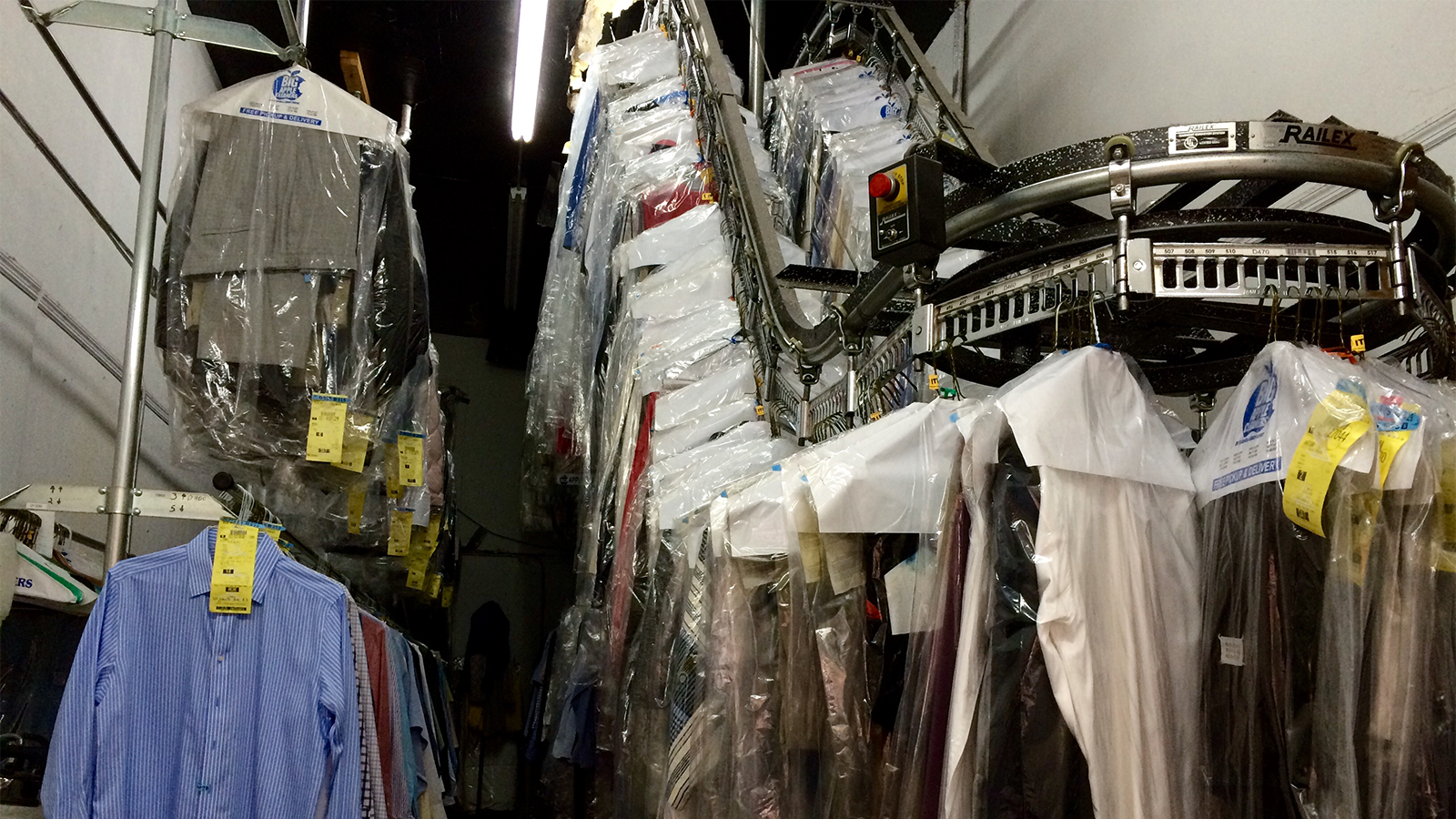
Dry cleaning is a service that many of us rely on to keep our clothes looking fresh and crisp. From delicate silk blouses to expensive suits, dry cleaning offers a solution for garments that cannot be cleaned using traditional methods. But have you ever wondered how this process actually works? How does dry cleaning remove stains and odors without the use of water? In this article, we will delve into the fascinating world of dry cleaning and explore the techniques and chemicals used to effectively clean our cherished clothing items. Understanding how dry cleaning works can not only help us make informed choices about caring for our clothes but also shed light on an industry that has been serving us for decades.
What is dry cleaning and why is it necessary?
Dry cleaning is a method of cleaning clothes and fabrics without using water. Instead, it involves the use of solvents to remove stains and dirt from garments. The process starts with the inspection of the item to identify any existing stains or damages that require special attention. Then, the clothes are placed in a specialized machine that resembles a washing machine but uses solvents instead of water. The dry cleaning machine begins by circulating the solvent through the clothes, which helps dissolve oils and grease trapped within the fabric fibers. After this step, any remaining stains or spots are treated individually using specialized spot removal techniques. Finally, the garments go through a drying cycle where warm air is blown into the machine to evaporate any leftover solvent.
Dry cleaning is necessary for certain types of clothing materials or delicate fabrics that may shrink, lose color, or become distorted if they are subjected to traditional laundering methods with water. Fabrics such as silk, wool, cashmere, leather, suede, and velvet often require dry cleaning due to their sensitivity. Additionally, garments with intricate beadwork or sequins can be easily damaged in regular washers but can be safely cleaned through dry cleaning methods. Overall, dry cleaning ensures proper care for these specific items while effectively removing dirt and stains without causing harm.
The process of dry cleaning: Overview of steps
The process of dry cleaning involves several steps to ensure that clothes are effectively cleaned without the use of water. Firstly, garments are inspected for any stains or damages before being pre-treated. This step involves applying specialized solvents or detergents to targeted areas to help break down and remove tough stains.
Next, the clothes are placed inside large machines called dry cleaning machines. These machines are designed to agitate the clothing gently while simultaneously circulating a solvent known as perchloroethylene (perc). Perc is an effective cleaning agent that can dissolve oils and grease without damaging delicate fabrics. The agitation process helps loosen dirt and grime from the garments, allowing the perc solvent to penetrate more effectively. After the agitation process, the garments go through a rinse cycle where fresh perc solvent is used to remove any remaining dirt or detergent residues. Once rinsed, they undergo a thorough inspection again to ensure that all stains have been successfully removed. Finally, the garments are pressed and finished using steam and heat in order to restore their original shape and give them a crisp appearance before being packaged and returned to customers.
Overall, dry cleaning offers an efficient method of removing stains from various types of fabric without causing damage or shrinkage. Its unique process allows for effective cleaning while preserving delicate materials that cannot be washed with water-based methods at home.
Solvent used in dry cleaning: Types and properties
Dry cleaning is a highly effective method for cleaning delicate fabrics that are not suitable for water-based washing. The process involves the use of solvents to remove dirt, stains, and odors from clothing without causing any damage to the fabric. There are several types of solvents commonly used in dry cleaning, each with its own unique properties.
One common solvent used in dry cleaning is perchloroethylene (PERC). PERC is a colorless liquid with a distinctive odor and excellent cleaning properties. It effectively dissolves oils, grease, and other stains without shrinking or damaging the fabric. However, PERC has been linked to potential health risks and environmental concerns, leading to its phased-out usage in many countries. Another widely used solvent in dry cleaning is hydrocarbon-based solvents such as Stoddard solvent or DF-2000. These solvents have less environmental impact compared to PERC and are considered safer alternatives. They work by dissolving stains and dirt while being gentle on fabrics. However, they may not be as effective at removing certain types of stains compared to PERC.
Overall, choosing the right solvent for dry cleaning depends on factors such as the type of fabric being cleaned, the nature of stains present on the garments, as well as any environmental or health considerations involved. Dry cleaners must carefully select their solvents based on these factors to ensure optimal results while minimizing any potential harm to both people and the environment.
Benefits of dry cleaning over traditional washing methods
Dry cleaning is a method of cleaning garments and fabrics without using water. Instead, it utilizes a chemical solvent that effectively removes stains, dirt, and odors from the fabric. This method offers several benefits over traditional washing methods. Firstly, dry cleaning is gentle on delicate fabrics such as silk, wool, and cashmere that may shrink or get damaged when soaked in water. The solvent used in dry cleaning is less abrasive than water and prevents any potential damage to the fabric’s fibers.
Secondly, dry cleaning ensures a thorough removal of stubborn stains that regular washing may not be able to eliminate completely. The chemical solvent used in dry cleaning has strong degreasing properties and can dissolve oil-based stains effectively. Additionally, this method can remove other difficult stains like ink or lipstick without leaving any residue behind. Furthermore, dry cleaning also helps preserve the color and texture of the fabric for longer periods compared to traditional washing methods. Since there is no soaking involved, there is minimal fading or bleeding of colors during the cleaning process. Moreover, dry cleaners are experienced professionals who understand how different fabrics should be treated to maintain their quality. Understanding how dry cleaning works allows individuals to make an informed decision when it comes to caring for their clothing items appropriately.
Special care instructions for different types of garments
Dry cleaning is a specialized process used to clean garments and textiles that cannot be safely washed with water. Understanding how dry cleaning works is crucial when it comes to taking special care of different types of garments. The first step in the dry cleaning process involves the removal of any visible stains or spots using various stain-removal techniques. Once the stains are treated, the garment is placed inside a machine that resembles a large washing machine but operates differently. Inside this machine, the garments are cleaned using a solvent called perchloroethylene (often referred to as “perc”). This solvent effectively dissolves oils, greases, and other substances on fabrics without causing damage or shrinkage. It also prevents colors from bleeding or fading during the cleaning process. Afterward, the garments go through a drying cycle that removes any remaining traces of solvent. Finally, they are pressed and finished before being returned to their owners looking fresh and clean.
Different types of garments require different care instructions after dry cleaning. For example, delicate fabrics like silk or lace may need additional attention such as gentle pressing at low temperatures to maintain their shape and texture. On the other hand, woolen items might benefit from steaming instead of traditional ironing to prevent them from becoming flat or stretched out. By following these specific care instructions for each type of garment after dry cleaning, individuals can ensure their clothes remain in excellent condition for years to come.
Common misconceptions about dry cleaning debunked
Dry cleaning is often misunderstood, and there are several common misconceptions surrounding this cleaning method. Firstly, many people believe that dry cleaning means the clothes are cleaned without any use of liquid. However, this is not entirely true. Dry cleaning involves using a specialized solvent instead of water to clean garments. The solvent used in dry cleaning evaporates quickly and leaves no residue on the fabric, making it an effective way to remove stains and dirt.
Another misconception about dry cleaning is that it can damage delicate fabrics or cause colors to fade. While it’s true that certain fabrics may require extra care during the dry cleaning process, professional cleaners are trained to handle different materials properly. They use gentle solvents and techniques tailored to each garment’s specific needs, minimizing the risk of damage. Additionally, modern advancements in dry cleaning technology have made it even safer for delicate fabrics, ensuring they return to their original condition without any harm. Contrary to popular belief, dry cleaning does involve the use of a solvent instead of water but remains highly effective at removing stains while leaving no residue behind. Moreover, professional cleaners take precautions to ensure delicate fabrics are handled with care during the process, disproving assumptions about potential damage or color fading caused by dry cleaning.
Conclusion: Importance of dry cleaning for garment care
In conclusion, dry cleaning is a highly effective method of cleaning clothes and other fabrics without the use of water. It involves the use of solvents and specialized equipment to remove stains, odors, and dirt from garments. The process begins with a thorough inspection of each item to identify any existing damage or stains. Then, the garments are immersed in a solvent that dissolves grease and oil-based stains. Afterward, they undergo a gentle agitation process to further remove dirt and debris. Finally, the garments are dried using heat and air before being pressed and packaged for return to the customer. Understanding how dry cleaning works can help individuals make informed decisions about their garment care needs.





